Specular Reflection
Jerry Orter
October 2014
SPECULAR REFLECTION

INCIDENCE is equal to REFLECTION
In order to gain some insight into the forces that elevate certain products to the level of ‘works of art’ it is helpful, among other investigations, to look into the economic and political underpinnings of the institutions, individuals and groups who share the control of power.
Hans Haacke
Walking
The human child first begins to crawl at about 6 to 9 months of age. Next, with persistent practice of standing up and falling down, standing up, falling down, standing up and balancing. Eventually, after much repetition, standing up, balancing, reaching forward with one leg and then the other, plodding quickly so as not to fall; walking. Turning now to assess the accomplishment, the distance, the child falls down and cries. The first steps; early childhood separation, individuation and separation anxiety. A necessary stage of development.
Fingers
It has been observed that certain primates will hold a twig and plug it into an ant nest to obtain a sweet tasting hors d’oeuvre, ants on a stick.
The stick as an extension of the fingers enables the meal. The stick is also an extension of the mind via an applied concept; a basic technology, the utilization of something that extends beyond the individual biological capacity to obtain an objective result. The ability to employ the twig as a “tool” is the ability to first perceive the problem and then conceive the solution.
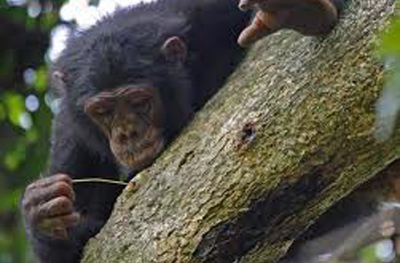
Kant
Comparison
the likening or differentiation of mental images to one
another in relation to the unity of consciousness.
Reflection
going back over different mental images; how they
can be comprehended in one consciousness
Abstraction
segregation of everything else by which the mental
images differ.
Hair
An effective way to manage long hair is to gather it together and bind it. Another way is to gather it into three equal parts, braid it and then bind the end. Hair treated this way is less likely to gather dust, become matted, or impair the field of vision.
Braiding requires the concept of three units, and the utilization of a system, much like rhythm; the counting of conceived space within a specific unit of time.
Hunters and Gathers
1.
A troop of early humans forage through the vegetation, picking and eating as they go, scavenging an occasional fish or clam or a bit of carrion. Hunting is a sophisticated extension of gathering. Scarcity of vegetation or carrion is a threat to survival and will require the enormous effort of physical prowess, the capacity to deceive through stealth, and most importantly, the ability to organize.
An extension of the body is necessary to obtain prey. A healthy bird cannot be grabbed by hand. A deer cannot be felled without an implement. Technology is essential for human survival.
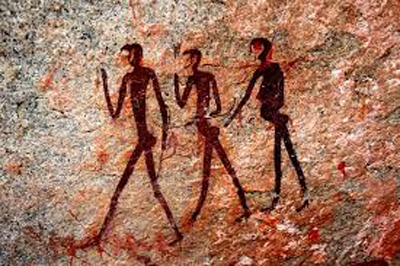
2.
In the season when the fruit, or snails or mollusks are abundant and more is available than can be carried by the hands or arms, large leaves can be used to gather, bind and carry. Large leaves to create a clean floor to lay the fruit or sleep on. Large leaves to fan the fire, to shield the head from rain or hot sun. To fan the face to cool it or shoo away the flies.
Palm leaves can be fitted together if they are first organized then interlocked, much like the braiding of hair. This primal form of woven leaves have a longer lasting utility than individual large leaves and can produce larger items; mats, roofs, trays, baskets, fish traps. The same concept is used with grasses and fibrous plants to produce bindings, nets, bows and fabric.
The technique of weaving requires higher intelligence, concept, planning, systems and math. The process becomes rote through repetition.
Levites
Levi, Levy, Lev, Halevy, Levai, Levay, Levita, Leviyev, Lewiki, Levic, Levit, Levitt, Lewit, Lewitt, LeWitt, Lewita, Levitan, Lewitinn, Lewitanski, Lewinsky, Leyvi, Leyvik, Levitch, Levicz, Levis, Lewitz, Lewis, Levitsly, Lefite, Lafitte, Lowe, Lowes, Lowen, Lowenthal, Lowenstein, Loewy, Lowi, Levin, Lavin, Levine, Lavine, Levinson, Levinthal
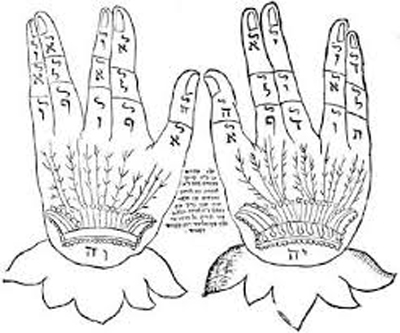
The Labyrinth
Every seven years, seven youths and seven maidens were sent to the island of Crete to be placed in the labyrinth and devoured by the Minotaur as tribute to King Minos. Theseus went to Crete to kill the minotaur and thus end the bloody contract. On the island Theseus seduced Ariadne who provided him with a ball of yarn to be unraveled as he made his way through the confusing passages of the Labyrinth. Theseus found the Minotaur and beat him to death with his bare hands, then followed the thread and successfully exited the Labyrinth.
The ancient Greek word for a ball of yarn is klew from which the modern English word clue is derived.
The myth of Theseus and the Minotaur is an illustration of concept and application, the organizing and making soluble the convolutions of the unfamiliar.
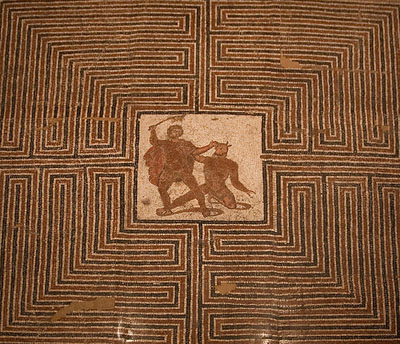
Weave
Verb
1. To interlace threads into cloth.
2. To construct by interlacing or
interweaving strips or strands
of material.
3. Combine elements into a complex whole.
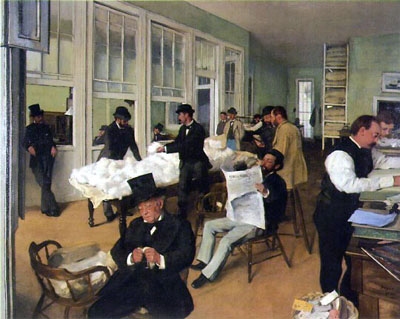
The Industrial Revolution
By organizing and exploiting the labors of enslaved or paid workers the economy, social structure and individual psyches of most of the world were transformed; a revolution.
In the late 18th century certain innovations were to eventually change the way we live. It was primarily the mechanization of the production of textiles. First, the process of spinning, which was a cottage hand craft, was replaced by water powered mills. Then carding and weaving were replaced as home industries and became mill products. Cotton replaced wool as the fabric of choice. It was more practical, lightweight, soft, easy to dye and print, and easy to clean.
With the increased demand for cotton came the need for more slaves in the American South, as cotton was a labor intensive crop. Plantations that had once produced tobacco or sugar were converted to the highly profitable cotton, and a much larger slave population was used to till, plow, plant, weed, harvest, deseed, bale and ship to England or to the Northern states. In the North, cotton mills were set up along rivers and creeks. Mill owners recruited young farm girls to work the mills. Farm girls were preferable; they would be paid much less than a man since girls were not as important to farm work as were men. Farm families encouraged their daughters to work the mills and earn cash. Though the girls were required to work 12 to15 hours per day at the mill, the prospect of independence outside of the male dominated family farm was the attraction.
Cake Walk
By 1860 Britain was the world’s most powerful country due in great part to the industrial revolution and its textile industry. 75% of all the cotton supplied to their mills came from the American South. All labor from slaves.
New York City had become the “Capitol of the South” mainly because of its dominant role in the cotton trade. New York received 40% of all domestic cotton revenue by providing insurance, shipping and financial services.
With the ever growing demand for cotton and the possession of slave labor, the cotton plantation owners became fabulously wealthy. They built huge mansions which were tended by house slaves who cooked, cleaned and served the master’s domestic needs. These house slaves prepared, served and tended the guests at the plantation galas.
“Us slaves watched white folks’ parties where the guests danced a minuet and then paraded in a grand march, with the ladies and gentlemen going in different ways and then meeting again, arm in arm, marching down the center together. Then we’d do it too, but we used to mock ‘em every step. Sometimes the white folks noticed it. I guess they thought we couldn’t dance any better.”
Griffin the Fiddler
Its origins are in Southern slavery. It was developed from the “prize-walks,” “chalk-line walk” or the “walk around.” With much bowing and bending, the house slaves mocked the aristocratic mannerisms of Southern high society. Slave couples would line up to form an aisle and each pair would take turns promenading in a high stepping performance down the aisle, each competing to outdo the other. The cake walk was held at the master’s house, where he was the judge, the master of ceremonies and the master of the joke; if the master is in on the jokes that mock him, the jokes don’t reduce his standing and reinforce his authority as the master.
Eadward James Muybridge
April 9, 1830-May 8, 1904
Born: Edward James Muggridge
1850 Edward James Muygridge
1867 Edward James Muybridge
1875 Edwardo Santiago Muybridge
1882 Eadward James Muybridge
In 1878 Muybridge studied the horse at gallop by using a series of cameras set up along the edge of a race track, each camera triggered as the horse passed through a thread that was stretched across the path and attached to the shutter. The resulting series of photographs was the forerunner of motion pictures.
In the 1880’s the University of Pennsylvania provided Muybridge with funding to research a study of motion in animals and humans. Subjects were photographed while moving before a series of cameras which were shuttered in sequence and a measured grid pattern as a background. Organizing isolated segments of motion sequentially allowed for the analysis of motion. Muybridge answered the question: when a horse gallops, do all four feet leave the ground?
ex-is-ten-tial-ism
Noun
A philosophy that emphasizes the uniqueness of the individual and the importance of personal experience as a free agent in an indifferent, hostile and seemingly meaningless universe.
The Nature of Being
•What it is essence
•How it is quality
•How much it is quantity
•Where it is relativity
The word angst was introduced into the English language from the Danish and German word angst by way of 19th century translations of Kierkegaard and Freud.
Kierkegaard’s “Concept of Anxiety” investigates the profound condition of dread and illustrates an aspect by this example:
A man stands on a ledge at the top of a tall building. He feels fear (of falling) and at the same time feels the terrifying impulse to jump. The experience of anxiety is triggered by the simultaneous urge to survive and to jump; referred to as “the dizziness of freedom.”
The nihilistic realization that life has no meaning, that the individual, or possibly all humanity, is insignificant and without purpose gives cause for anxiety.
Abstract Expressionism
The demands of living through the Dust Bowl, the Great Depression, World War II, the Korean War, Joseph McCarthy, the Cold War and all the after effects were the ground that served to bring about the artists listed below and an enthusiastic following.
• Jackson Pollock
• Willem de Kooning
• Franz Kline
• Lee Krasner
• Robert Motherwell
• William Baziotes
• Mark Rothko
• Barnett Newman
• Adolph Gottlieb
• Richard Pousette-Dart
• Clifford Still
The times were cacophonic, over the top, emotional, anxiety ridden, commie fearing, nuclear terrifying, gaudy, obvious, sentimental, sensational. A cooler approach eventually arose as a refuge, a remedy to perhaps affirm a better, simpler, less disturbing, more desirable way of being. Miles Davis shifted the temperature to a cooler setting. Muzak was piped into elevators and dentist offices. Mantovani was played during the cocktail hour. Eastern philosophy, especially Zen, began to seep into the picture. The time was ripe for Minimalist painting and sculpture. It was received much like walking into an air conditioned store on a sweltering summer day in the city. It was cool anonymity compared to hot expression. Blurring the boundaries between sculpture and painting, utilizing geometric forms and industrial materials, eradicating any suggestions of self-expression, or metaphors, or illusions. Removing any signs of authorship, challenging the entire relationship of viewer and object. The meaning of the object was not within it, but on the surface.
When you have relating parts, in the first place, you’re assuming you have a vague whole — the rectangle of the canvas — the definite parts, which is all screwed up because you should have a definite whole and maybe no parts or very few.
Donald Judd
When objects are presented within the context of art (and until recently objects always have been used) they are as eligible for aesthetic consideration as are any objects in the world, and an aesthetic consideration of an object existing in the realm of art means that the object’s existence or functioning in an art context is irrelevant to the aesthetic judgment.
Joseph Kosuth
Just because the objects exist within the same three dimensional space as the viewer, does not make the object art by default; it is still just an object, or rather a compilation of objects.
Michael Fried
Struc-ture
Noun
the arrangement of and the interrelation of the parts or elements of a complex entity where the whole is considered rather than any single part.
…the phenomena of human life are not intelligible except through their interrelations, these relations constitute a structure, and behind local variations in the surface phenomena there are constant laws of abstract culture.
Simon Blackburn
Primary Structures:
Younger American and British Sculptors
The Jewish Museum New York, NY
April 27 June 12, 1966
Sculpture Court/Entry
• David Annesley, Swing Low, 1964
• Anthony Caro, Titan, 1964
• Tony Smith, Free Ride, 1962
Lobby
• Judy Cohen Gerowitz, Rainbow Picket, 1966
• Robert Smithson, Cryosphere, 1966
Gallery 1
• Dan Flavin, corner monument 4 for those who have been killed in ambush (for Jewish Museum) (for *P.K. who reminded me about death), 1964
• Peter Forakis, JFK, 1963
• Ellsworth Kelly, Blue Disc, 1963
• Forrest Myers, Zygarat & W. & W.W.W., 1965
• Salvatore Romano, Zeno II, 1965
• William Tucker, Meru I, 1964
• William Tucker, Meru II, 1964
• William Tucker, Meru III, 1964–65
• David von Schlegell, Wave, 1964
Underpass
• Gerald Laing, Indenty, 1966
• Gerald Laing, Trace, 1965
• Tina Matkovic (Spiro), Projection, 1965
Gallery 2
• Carl Andre, Lever, 1966
• Lyman Kipp, Andy’s Cart Blanche
• Tim Scott, Peach Wheels, 1962
• Richard Van Buren, Free Epton, 1966
• Isaac Witkin, Nagas, 1964
Gallery 3
• Tony DeLap, Ka, 1965
• Tom Doyle, Over Owl’s Creek, 1966
Gallery 4
• Richard Artschwager, Table with Pink Tablecloth, 1964
• Richard Artschwager, Rocker, 1965–75
• Michael Bolus, No. 6, 1965
• Paul Frazier, Pink Split, 1965
• Douglas Huebler, Bradford 2-66, 1966
• John McCracken, Northumberland, 1965
• Peter Phillips, Tricurvular, 1964–65
• Anne Truitt, Sea Garden, 1964
Gallery 5
• Ronald Bladen, Three Elements, 1965
• Robert Grosvenor, Transoxiana, 1965
• Donald Judd, Untitled, floor 1966
• Donald Judd, Untitled, wall 1966
• Robert Morris, Untitled (L Beams),[5] 1966-67
Gallery 8
• Larry Bell, Untitled(peach)
• Larry Bell, Untitled(pink)
• Larry Bell, Untitled(gold)
• Walter de Maria, Cage,[6] 1961-65
• Sol LeWitt, Untitled, 1966
Gallery 10
• Daniel Gorski, Fourth Down
• David Gray, LA/2, 1965
• David Hall, Izzard, 1966
• Phillip King, Through, 1966
• John McCracken, Manchu, 1965
• Peter Pinchbeck, Space Jump
• Michael Todd, Viet, 1966
• Michael Todd, Ball Joint,[7] 1966
• Derrick Woodham, Siviley, 1965
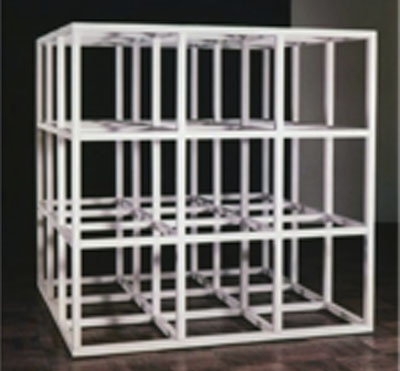
What the work of art looks like isn’t too important. It has to look like something if it has physical form. No matter what form it may finally have it must begin with an idea. It is the process of conception and realization with which the artist is concerned.
Ideas alone can be works of art; they are in a chain of development that may eventually find some form. All ideas need not be made physical.
Sol LeWitt
The thing can never be separated from someone who perceives it; nor can it ever actually be in itself because its articulations are the very ones of our existence, and because it is posited at the end of a gaze or at the conclusion of a sensory exploration that invests it with humanity to taking up or the achievement by us of an alien intention or inversely the accomplishment beyond our perceptual powers and as a coupling of our body with the things.
Maurice Merleau-Ponty – Phenomenology of Perception
Wall Drawing 11
First Installation
Paula Cooper Gallery, New York
First Drawn By Jerry Orter, Adrian Piper, Sol LeWitt MASS MoCA Building 7 Ground Floor
Instructions for making Wall Drawing 11:
A wall divided horizontally and vertically into four equal parts.
Within each part, three of the four kinds of lines are superimposed.
There is no reason that an artist actually has to make the physical work himself as long as he determines its characteristics.
Michael Kirby – the Aesthetics of the Avant Garde
To pretend, I actually do the thing: I have therefore only pretended to pretend.
Jacques Derrida
In conceptual art the idea or concept is the most important aspect of the work. when an artist uses a conceptual form of art, it means that all of the planning and decisions are made beforehand and the execution is a perfunctory affair. The idea becomes the machine that makes the art.
Sol LeWitt
Ac-tu-al
adjective
Real, not merely possible or imagined; existing in fact or reality.
Being, existing, or acting at the present moment.
Existing in reality as a matter of fact.
Ownership of the work is transferred to the purchaser, much in the manner of stocks, bonds, patents, copyrights, easements, or profits. The purchaser does not buy the physical object; the actual wall drawing. The purchaser buys the right of ownership of the concept, the intellectual property. The piece can be produced by anyone who follows the instructions. The piece can be eradicated and produced at another location.
In transformational development, when you integrate other people’s ideas into your way of life and decision-making, then you become another owner of these ideas. Human development is about progressively becoming owner of problem-solving solutions.
Joseph Foumbi – Tulane University
By deobjectifying and decomodifying the work, the concept becomes the object and ultimately the commodity. The result is akin to certain commercial and financial transactions. A metaphor if ever there was one. Perhaps an unintentional simulacrum by way of an intended inversion; an affirmation through denial. Denying the actual object as a commodity and instead offering up the concept, instructions and papers of ownership as the transaction.

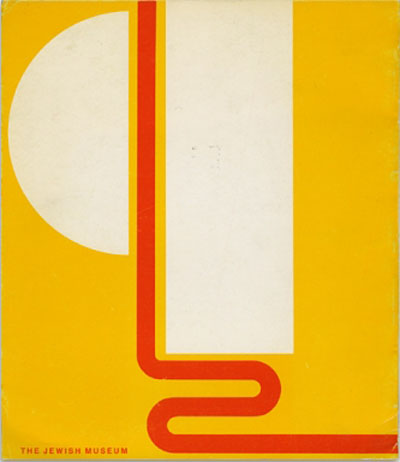
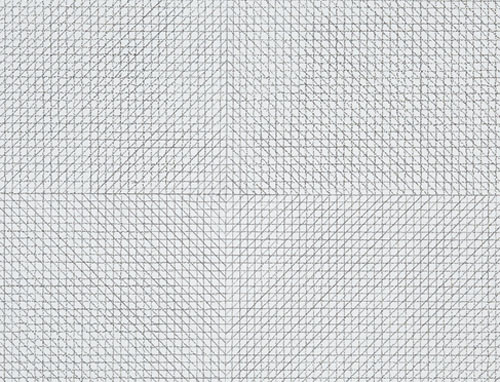
It is a mind blower, and very provacative in that you do show the nexus between stages of civilisation and concepts of art. I am not sure I agree with you thesis, that incidence = reflection.
Although in that equation, there is the dual interepretation of each word, incidence, meaning an occurence, or in physics, and intersection. And reflection can either be a physical reflection as in a mirror, or it can be an of introspection.
So is the incident the occurence of the idea, which, as Sol LeWitt, says, is the important part?
Taking us through the industrial revolution, and then through the structuralists, the phenomenologists, the deconstructivists, and they are trying to understand the same thing, to the commofification of the idea.
Perhaps on some level all art is just that.
I am sure we will be discussing this!
Oh, I did not understand the part about the Levites . . . .